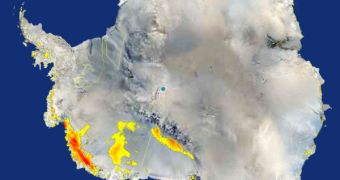New discoveries made in the Antarctic now force specialists to revise their previous models of how much ice melts and by how much the water levels worldwide will increase because of it. Thus far, they believed that the ice was formed due to cold, melted because of global warming and then flowed into the ocean. But now, thanks to a new network of GPS systems positioned on the Southern continent, they know that the bedrock itself, which makes up the territory Antarctic ice sheets dwell on, is moving up and down, depending on the amount of ice on it.
As ice melts and lifts, the thick layers of rock that support it rise as well, to fill in the gap. Between the two layers, there are underground lakes that force the ice to move in specific patterns, and whose floods trigger massive sheet cracks throughout the Western Antarctic Ice Sheet (WAIS).
"When you compare how fast the earth is rising, and where, to the models of where ice is being lost and how much is lost – they don't match. There are places where the models predict no crustal uplift, where we see several millimeters of uplift per year. We even have evidence of other places sinking, which is not predicted by any of the models," argues Ohio State University associate professor of earth sciences, Terry Wilson, who is part of the research team currently scouting the WAIS.
"Our preliminary results show that we can dramatically improve our estimates of whether Antarctica is gaining or losing ice," she adds. "We're pinning down both parts of this problem, which will improve the correction made to the satellite data, which will in turn improve what we know about whether we're gaining ice or losing ice."
The debate on whether Antarctica is melting or actually freezing has been raging on for quite some time now, with those sustaining the melt pointing at the WAIS, which loses significant stretches of ice every year, and critics pointing at the East Antarctic sheets, which have grown thicker over the past few decades. Hopefully, the new POLENET GPS research will offer some clues as to what is exactly going on underneath the ices of Antarctica.

 14 DAY TRIAL //
14 DAY TRIAL //